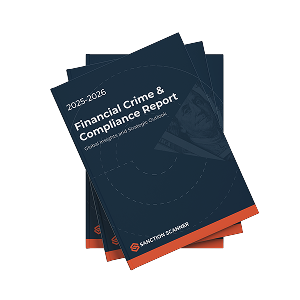In the digital age, the fight against money laundering has entered a new frontier, with blockchain technology emerging as a formidable ally. This decentralized ledger offers unparalleled transparency, security, and efficiency, making it an essential tool in the global effort to curb financial crimes. As illicit financial flows continue to challenge regulatory frameworks worldwide, understanding the role of blockchain in preventing money laundering is more crucial than ever.
What is Blockchain?
Blockchain technology, characterized as a shared and immutable ledger, has emerged as a pivotal tool in modern business networks for recording transactions and monitoring assets. The scope of assets that can be tracked and traded on a blockchain network is vast, encompassing both tangible entities like real estate, vehicles, cash, and land, as well as intangible assets such as intellectual property, patents, copyrights, and branding. This versatility not only streamlines transactional processes but also mitigates risks and reduces costs for all stakeholders involved.
Blockhain firstly entered our lives with the emerge of cryptocurrencies. However, the areas in which it operates are expanding rapidly. The significance of blockchain currencies stems from their ability to revolutionize the flow of information within business ecosystems. In an era where the speed and accuracy of data transmission are paramount, blockchain stands out for its capacity to deliver immediate, transparent, and shared information. Stored on an immutable ledger accessible exclusively to permissioned network members, blockchain facilitates real-time tracking of orders, payments, accounts, production, and more. By offering a single source of truth that all members can access, blockchain instills confidence, fosters collaboration, and unlocks new efficiencies and opportunities in various industries.
How Does Blockchain Work?
At its core, a blockchain operates akin to a digital ledger, much like a spreadsheet or database, where data is entered, stored, and managed. However, the fundamental distinction lies in how this data is structured and accessed within the blockchain framework. Each blockchain comprises interconnected blocks of data, akin to cells in a spreadsheet, with each block containing transactional information. This structure facilitates the recording and tracking of various assets and transactions across a decentralized network.
- Data Structure: A blockchain functions as a database, but unlike traditional databases, it's structured differently. Data is entered and stored in blocks, similar to cells in a spreadsheet, where each block contains transaction information.
- Distribution: One of the key features of a blockchain is its decentralized nature. Multiple copies of the blockchain are stored on numerous machines across the network. For a blockchain to be valid, all copies must match.
- Encryption: When a block is full, its information is encrypted using an encryption algorithm, resulting in a unique hexadecimal number called a hash. This hash is then added to the header of the following block, creating a chain of blocks.
- Transaction Process: Transactions on a blockchain follow a specific sequence. For example, on Bitcoin's blockchain, transactions are initiated using cryptocurrency wallets, stored in a memory pool, and then queued until a miner picks them up.
- Mining Process: Mining involves solving complex mathematical puzzles to validate transactions and add them to the blockchain. Miners compete to find a valid hash for the block, a process known as "proof-of-work." This process consumes significant computational power and energy.
- Confirmation: Once a block is closed, transactions within it are considered complete. However, confirmation occurs when subsequent blocks are validated, typically taking about one hour on Bitcoin's network. Other blockchains, like Ethereum, have different validation processes, often faster and less energy-intensive than Bitcoin's.
How Does Blockchain Improve AML Compliance?
Blockchain technology presents a paradigm shift in Anti-Money Laundering (AML) compliance, offering innovative solutions to combat the evolving challenges faced by traditional systems. By leveraging blockchain, financial institutions and regulatory bodies can enhance the effectiveness and efficiency of their AML compliance efforts.
As the financial industry embraces blockchain technology, the potential for transformative impact on AML compliance becomes increasingly evident, heralding a new era of efficiency and transparency in combating financial crimes.
More Transparent Transactions Through Blockchain Check
Blockchain technology introduces a level of transparency into transactions that has not been achievable in traditional financial systems. This transparency is considered by many as a potential new standard for cybersecurity.
In blockchain networks, data is made openly accessible to network participants through tools like block explorers, allowing them to inspect holdings and transactions associated with public addresses. This transparency ensures that all parties have visibility into the transactional activity, reducing the potential for bias or manipulation.
While conventional analysis and reports provide some assurance of security performance, there may be inherent biases due to the entities funding these assessments. Blockchain eliminates such biases by offering a transparent record of transactions and threat data, allowing stakeholders to verify the integrity of security solutions independently. This increased transparency instills greater trust in security vendors and ensures that individuals and organizations can make informed decisions when selecting cybersecurity solutions.
Effective Blockchain Security
One of the most common questions about the blockchain is, “Is blockchain safe?”
- Decentralized Architecture: Blockchain's security is fundamentally enhanced by its decentralized structure. Every participant (node) in the network holds a complete copy of the ledger, making the system highly resistant to centralized attacks and unauthorized changes.
- Data Integrity and Immutability: The technology ensures that once a transaction is recorded on the blockchain, altering it becomes nearly impossible. This is because any modification would require the consensus of the majority of nodes, safeguarding against fraud and unauthorized activities.
- Trust and Reliability: Blockchain eliminates the need for a central authority by allowing all participants to independently verify transactions. This not only reduces potential points of failure but also significantly increases the system's security and reliability.
- Broad Industry Applications: The security benefits of blockchain extend across various sectors, from preventing financial fraud to ensuring the authenticity and traceability of products in supply chains. Its ability to protect sensitive information makes it a versatile tool for enhancing security measures industry-wide.
In essence, blockchain's combination of decentralization, data integrity, and trust-building mechanisms offers a robust security framework that is adaptable across multiple industries, marking a significant shift in how digital security is approached.
Betterment of KYC Solutions Through Blockchain Identity
The KYC (Know Your Customer) process, while essential for regulatory compliance and risk management, presents significant challenges for companies. These challenges include the time-consuming and resource-intensive nature of verifying customer identities, especially when dealing with a large volume of clients or complex ownership structures.
Additionally, the lack of standardization in KYC requirements across jurisdictions creates confusion and compliance burdens for companies operating internationally. Moreover, the risk of fraud and identity theft further complicates the KYC process, as criminals may exploit vulnerabilities in traditional systems to perpetrate fraudulent activities, leading to financial losses and reputational damage for companies.
Blockchain technology offers a promising solution to address these challenges and enhance KYC processes. By leveraging blockchain identity solutions, companies can create a decentralized and tamper-proof system for securely storing and sharing customer data. This not only streamlines the onboarding process by eliminating paper-based documents and manual data entry but also enhances security by safeguarding customer data against cyberattacks and data breaches. Additionally, blockchain ensures data accuracy and integrity through its immutable ledger, reducing the risk of errors and inconsistencies in customer information. As a result, blockchain identity solutions have the potential to revolutionize KYC processes, making them more efficient, secure, and compliant with regulatory requirements.
The Role of AML Technology for Blockchain
Blockchain technology has the potential to revolutionize Anti-Money Laundering (AML) policies and procedures, presenting both opportunities and challenges for regulators and financial institutions.
The inherent characteristics of blockchain, such as decentralization, transparency, and immutability, can significantly enhance AML efforts by providing a secure and tamper-proof platform for monitoring financial transactions. By leveraging blockchain, regulators can create a decentralized monitoring system that effectively identifies and stops suspicious transactions, thereby strengthening AML compliance.
One of the primary advantages of using blockchain for AML purposes is the ability to create a distributed and transparent ledger of financial transactions. This ledger, maintained by a network of nodes, ensures that all participants have access to the same information, making it easier to detect and track suspicious activities. Additionally, blockchain's immutability ensures that once a transaction is recorded on the ledger, it cannot be altered or deleted, providing an immutable audit trail of financial transactions.
Furthermore, blockchain technology can streamline the KYC process, making it more efficient and secure. By implementing blockchain-based identity verification systems, financial institutions can securely store and share customer data in a tamper-proof manner, reducing the risk of identity theft and fraud. Additionally, blockchain's decentralized nature eliminates the need for centralized intermediaries, reducing the potential for human error and improving the accuracy of KYC processes. Overall, blockchain technology has the potential to transform AML compliance, providing regulators and financial institutions with powerful tools to combat money laundering and financial crime.
KYC Solutions by Sanction Scanner
Sanction Scanner offers cutting-edge KYC solutions designed to streamline compliance processes and mitigate risks associated with money laundering and financial crime. As a leading designer of AML software and a distinguished member of the prestigious Regtech100, Sanction Scanner combines innovative technology with deep industry expertise to deliver comprehensive and effective KYC solutions.
Sanction Scanner's KYC solutions leverage advanced algorithms and data analysis capabilities to provide real-time customer due diligence (CDD) and identity verification.
Trusted by financial institutions, fintech companies, and businesses across various industries, Sanction Scanner empowers organizations to safeguard their operations and protect their reputation. To stay ahead of evolving regulatory requirements in today's complex and dynamic regulatory landscape, contact us or request a demo today.





